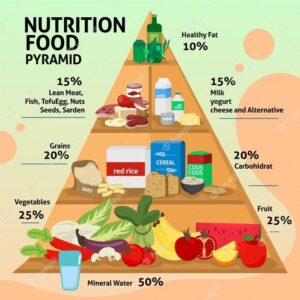Dr Paula Goel , Pediatrician & Adolescent Specialist, Fayth Clinic
Fortunately, there is a lot that you can do to help your child control his/her blood pressure. Overweight children should be encouraged to reduce weight to the normal level for age, using changes in lifestyle that lead to an increase in physical activity and reduce intake of unhealthy foods. Weight reduction in these children leads to a significant decline in blood pressure, often obviating the need for medications. Weight reduction also decreases cardiovascular risk factors such as elevated levels of lipids and blood sugar. Lifestyle diseases often affect the family and hence changes in lifestyle that are undertaken by the whole family, are expected to have better outcomes compared to nagging the child alone to eat less or exercise more.
Children with hypertension may benefit from a dietary approach to stop hypertension (DASH) diet (Fig. 3). A DASH diet focuses on increasing the daily intake of fresh fruits and vegetables, foods rich in dietary fiber, nonfat dairy products, and whole grains while restricting the intake of sugar and salt. Foods rich in salt include processed cheese, sauces, cornflakes, potato chips, salted nuts, papad, pickles, and preserved foods (canned vegetables, soups, salted fish, and meat). Salt restriction should not be so excessive that food is not palatable. The recommended daily intake of salt for 4–8yearold children is up to 1.2 g, and 1.5 g for older children.
Children should be encouraged to limit sedentary activity to <2hours/day, by limiting screen time and increasing walking, sports, or running. They should spend about 30–60 minutes on aerobic exercises on at least 3–5 days each week.
Monitoring blood pressure at home, at bedtime on 2–3 days each week, helps to understand if your child’s blood pressure is controlled. These records should be maintained in a notebook to help your physician plan your child’s management. Home blood pressure monitoring is particularly valuable since records taken in the doctor’s office are rather infrequent and may be influenced by anxiety.
Hypertension (DASH) diet. Examples of serving sizes for a 2,000-calorie diet are in parentheses as follows: whole grains (half-cup of cooked rice), vegetables (one cup raw salad or half-cup cooked vegetables), fruits (half-cup o fruit juice or half an apple or pear), dairy (one cup fat- free curd or yogurt), lean protein (one egg, 30 glean meat of 110 g tofu), nuts, seeds, and legumes (10 peanuts, 6 almonds or cashew nuts or 16 pistachios), sweets (one small cupcake or cola drink of 350 mL) and fats and oils (1 tablespoon peanut butter)





